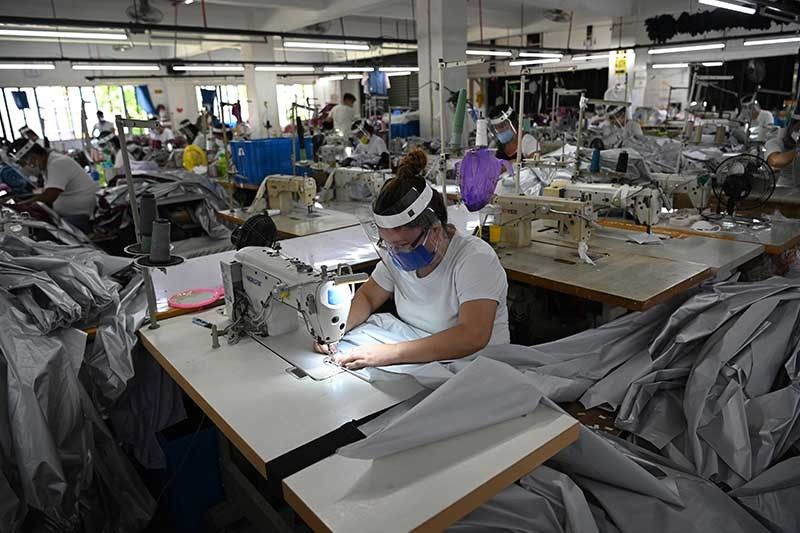Lockdowns demonstrate impact with factory output back to red

MANILA, Philippines — Local manufacturers snapped a delicate recovery in output in April after a spike in coronavirus infections triggered a return to strict lockdowns in key urban areas where factories were shuttered anew.
The Philippines’ purchasing managers’ index, a measure of factory output, sagged to 49 in last month based on results of a monthly survey of around 400 companies released by IHS Markit, a British information provider.
After only a quarter of growth, the PMI reading is now back below the 50-mark separating expansion from contraction. For Shreeya Patel, economist at IHS Markit, the slump in April marked “a setback for the Filipino economy.”
“Tightening restrictions led to another round of factory and business closures, with output particularly hard-hit. Meanwhile, labour force cuts extended into the second quarter of 2021,” Patel said in a commentary.
Indeed, a new quarter started on a negative note for factories after President Rodrigo Duterte placed Metro Manila, Bulacan, Rizal, Laguna and Cavite under enhanced community quarantine (ECQ), the strictest quarantine there is, from late March until mid-April following an unexpected surge in infections.
Movement restrictions had since been relaxed to less strict modified ECQ (MECQ) until May 14, but the damage on factories was already done. Based on IHS’s report, manufacturers recorded a “steep decline” in output in the first month of second quarter that was so “solid” it was among the quickest fall in the survey to date.
Output dropped as lockdowns sapped domestic demand for the first time since December. However, orders from European markets, where cities have started to gradually reopen, posted a milder contraction in exports, the survey showed.
Weak demand resulted into tepid hiring activity all while voluntary resignations persisted. But despite the job shedding, factories reported having sufficient manpower to operate machines as backlogs were also minimal.
On the supply side, stricter coronavirus curbs hampered the delivery of raw materials, tightening supply and pushing up input prices. Factories, in turn, responded by raising selling prices to partially cover for increasing production costs.
“Firms will hope that these issues are resolved, but with the full impact of the Suez blockage yet to take effect, the disruption to global trade is expected to reverberate,” Patel said.
Moving forward, factories welcomed the second quarter with bruised confidence, with optimism over higher output crashing to an 8-month low. “"On the brighter side, policy-makers have stressed the importance of the vaccination programme in bringing a return to normality and while the initial progression was somewhat slow, the roll-out seems to have gathered pace in recent weeks,” Patel said.
- Latest
- Trending
































